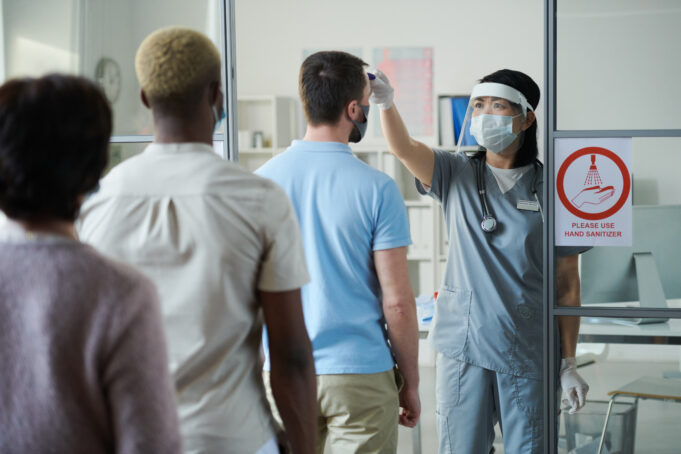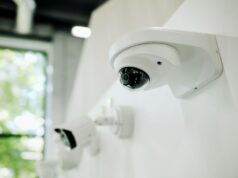As 2024 approaches, the importance of safety in hospital facilities management (HFM) continues to grow. The well-being of patients, staff, and visitors largely depends on the effectiveness of HFM professionals in addressing various safety concerns. This article highlights ten crucial safety areas in HFM, focusing on recent innovations that enhance safety standards. It covers aspects such as infection control, fire safety, structural integrity, and emergency preparedness, showcasing how advancements in these fields contribute to the overall safety and reliability of healthcare facilities. This exploration not only underscores the challenges faced in HFM but also reflects the commitment to elevating patient care and safety in healthcare environments.
Infection Control and Hygiene
This is paramount in a healthcare setting. HFM professionals must ensure proper sanitation practices to prevent the spread of infectious diseases. This involves overseeing cleaning protocols, managing waste disposal, and ensuring the availability and proper functioning of sanitation equipment. Failing to maintain strict standards can lead to outbreaks of hospital-acquired infections, endangering patients and staff health. Advances in infection control include the implementation of antimicrobial surfaces, the development of eco-friendly disinfectants, and the use of UV-C light disinfection robots. These innovations offer more effective ways to maintain hygiene standards in healthcare settings, crucial for preventing the spread of infectious diseases.
Fire Safety
Hospitals must adhere to strict fire safety standards. This includes maintaining fire alarms, sprinkler systems, and fire extinguishers, conducting regular fire drills, ensuring proper storage of flammable materials, and training staff in fire safety procedures. Inadequate fire safety measures can lead to devastating fires, risking lives and costly damages. In fire safety, smarter detection systems with real-time monitoring, advanced fire suppression technologies, and improved fire-resistant building materials mark significant progress. These advancements enhance the ability to quickly detect and respond to fire incidents, safeguarding both patients and staff.
Building and Structural Safety
Regular inspection and maintenance of the hospital’s physical infrastructure are necessary to prevent accidents. This includes ensuring the structural integrity of buildings, maintaining safe flooring to prevent slips and falls, and ensuring that all areas are well-lit and properly signposted. Structural failures or accidents can result in injuries, legal liabilities, and loss of trust. Smart building technologies for structural monitoring, improved design standards focusing on patient safety, and the adoption of anti-slip flooring materials are key advancements. These enhancements contribute to the overall safety and accessibility of healthcare facilities.
Medical Equipment Safety
The maintenance and proper functioning of medical equipment are crucial. This includes regular calibration, servicing, and testing of equipment to ensure they are safe and effective for patient care. Malfunctioning equipment can lead to incorrect diagnoses, treatment failures, and legal issues. The field of medical equipment has seen strides in regular equipment calibration, IoT integration for real-time monitoring, and stricter sterilization protocols. Ensuring the safety and functionality of medical equipment is vital for patient care.
Emergency Preparedness and Response
Hospitals must have comprehensive emergency response plans for scenarios like natural disasters, power outages, and other crises. This involves regular training and drills, as well as ensuring that backup systems (such as generators) are in place and operational. Unpreparedness can result in chaos, inadequate patient care, and potential loss of life during emergencies. Sophisticated emergency response software, virtual reality training drills, and enhanced backup systems represent significant progress in this area. These tools aid in preparing healthcare facilities for various emergency scenarios.
Hazardous Materials Management
Proper storage, handling, and disposal of hazardous materials, including chemicals and radioactive substances, are vital to prevent accidents and contamination. Mishandling can lead to hazardous exposures, environmental damage, and legal penalties. Improved containment and spill prevention technologies, advanced tracking systems, and enhanced personal protective equipment are crucial in managing hazardous materials. These innovations help in preventing accidents and ensuring safe handling.
Utility Systems Management
Ensuring the reliability and safety of utility systems (such as electrical, water, and HVAC systems) is essential for the uninterrupted operation of hospital facilities. Failures can disrupt critical services, leading to operational halts and compromised patient care. The adoption of smart utility systems, robust cybersecurity measures, and green technologies highlight advancements in utility management. These innovations ensure reliable and sustainable operations of healthcare facilities.
Accessibility and Patient Safety
Facilities must be accessible and safe for all patients, including those with disabilities. This involves maintaining clear pathways, and proper signage, and ensuring the safety of patient rooms and common areas. Lack of accessibility can lead to patient injuries, discrimination complaints, and legal actions. Implementing universal design principles, advanced patient monitoring systems, and improved mobility aids enhance accessibility and safety. These efforts ensure that healthcare environments cater to all patients’ needs effectively.
Workplace Safety
Protecting the health and safety of hospital staff is crucial. This involves implementing ergonomic practices, providing personal protective equipment, and ensuring a safe working environment to reduce the risk of injuries. Ignoring safety can result in staff injuries, decreased morale, and high turnover. Ergonomic improvements, comprehensive training programs, and wearable technology for staff monitoring are vital for workplace safety. They help in reducing occupational health risks and improving staff well-being.
Security
Maintaining a secure environment to protect patients, staff, and visitors from potential threats such as violence, theft, or unauthorized access. Inadequate security can lead to incidents of violence, theft, and unauthorized access, endangering everyone on the premises. In security, AI-powered surveillance, biometric access control, and improved communication systems for rapid response are notable advancements. These measures bolster the security of healthcare facilities against various threats.
As we navigate through 2024, these enhancements in HFM represent a proactive and evolving approach to hospital safety. The integration of these innovative solutions across various safety domains is instrumental in creating safer, more efficient, and patient-centric healthcare environments. For HFM professionals, the journey towards improving safety is continuous, adapting to new challenges and leveraging technological advancements to ensure the highest standards of care and safety in healthcare facilities.






